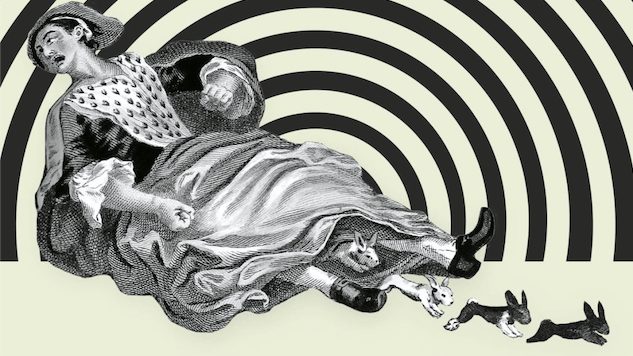A Woman Gives Birth to a Rabbit in Dexter Palmer’s New Novel
Cover design by Janet Hansen in association with William Hogarth Books Reviews dexter palmer
In 1726, an English woman named Mary Toft gave birth to rabbits.
Dexter Palmer’s new novel spins a tale from this historical event, but it’s less concerned with how Mary deceived all of England than with those who fell for her hoax. From Mary’s neighbors to King George himself, everyone convinced themselves to believe in an impossible reality. Mary Toft; or, The Rabbit Queen utilizes this widespread delusion to explore whether or not truth is fluid.
The novel follows Zachary, teenage apprentice to John Howard, the local surgeon who delivered the first rabbit. The naïve son of a minister, Zachary finds himself caught between faith and science as both fail to explain how a woman could give birth to rabbits. His position in the drama offers an intimate yet removed perspective, as the number of parties involved spiral out of control.
Early in the novel, Howard asks Zachary, “Is [truth] a thing that exists outside of our minds, waiting for us to perceive it and know it as truth? Or is truth a thing that collectively resides within the minds of all men, a matter of consensus, subject to debate, subject to alteration?” Palmer spends the rest of the text directing this question across an ambitious range of topics, from the intersection of religion and science to women’s ownership of their bodies to the divide between the wealthy and the poor.
 The main takeaway is that the realms of science and religion shouldn’t overlap. Howard’s medical training fails to explain the phenomena of rabbit births, so he turns to Crispin, Zachary’s minister father. But inviting Crispin (and by extension, God) only further muddles the case, and Howard later reflects that “men fear to interpret the world on their own authority when they are aware of [God’s] presence, because his senses are complete and perfect and his experiences are unlimited.” And Howard, a man of science, ironically becomes afraid to assert what he knows as truth for fear that it isn’t God’s truth.
The main takeaway is that the realms of science and religion shouldn’t overlap. Howard’s medical training fails to explain the phenomena of rabbit births, so he turns to Crispin, Zachary’s minister father. But inviting Crispin (and by extension, God) only further muddles the case, and Howard later reflects that “men fear to interpret the world on their own authority when they are aware of [God’s] presence, because his senses are complete and perfect and his experiences are unlimited.” And Howard, a man of science, ironically becomes afraid to assert what he knows as truth for fear that it isn’t God’s truth.
While the men waver, the women don’t. Howard’s wife Alice immediately recognizes Mary as a fraud and teases Howard for pursuing this “medical mystery” any further. Howard dismisses her, however, and doesn’t even think to ask Mary herself. Mary does eventually speak, but only through a chapter written from her perspective. Reflecting on the aftermath of a miscarriage, she muses, “the spaces inside women are meant by God for so much more that women’s ownership of them is clearly only ever provisional…they are intended to be penetrated, colonized, stuffed to bursting [by men].”
Palmer briefly touches on other societal topics within contexts befitting of the historical era. After a black man leaves a bar, the bartender asserts that “the fellow who came in here has the same blood in his veins as the rest of us,” but then adds that if more black people came from Africa and started speaking in foreign languages, “something would have to be done.” And in a gruesome back alley show designed to entertain the wealthy, a nobleman tells Zachary, “This is the last thing that money is good for, once you have as much as I do—to make myself more human, which regrettably but necessarily entails making you less human.” In Mary Toft, race, class and gender are murky waters to navigate in a changing world.
In the end, what is truth? To Howard’s earlier question, Zachary answers, “I am uncertain, sir.” After reading Mary Toft, we can only respond in the same way.
Jane Huang is a neuroscience PhD student by day and a freelance writer by night. She currently lives in Pittsburgh, PA.